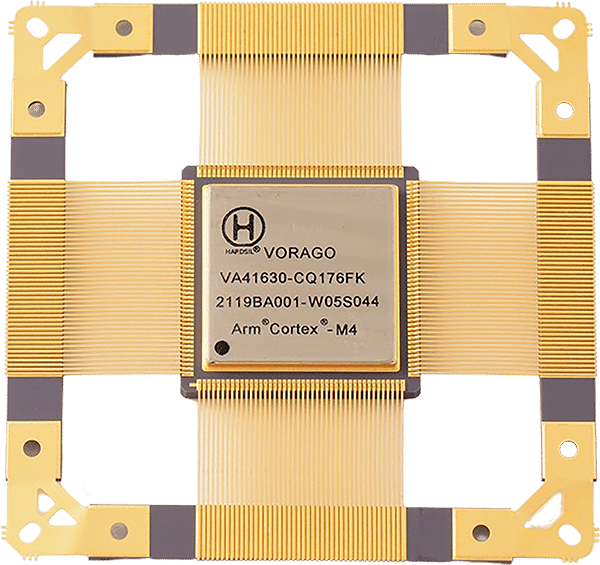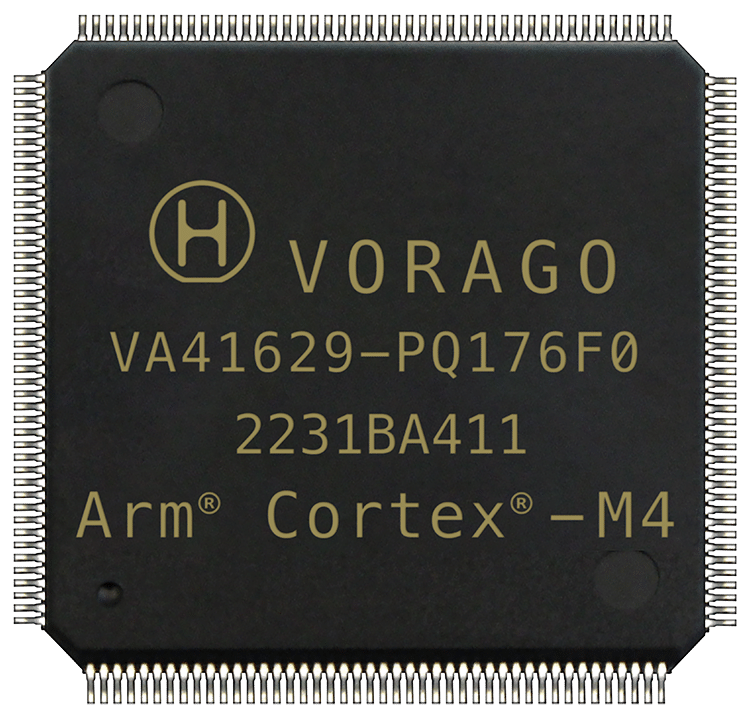Rad Hard MCU Technology in Space and Industrial Electronics
Rad Hard MCUs are essential components for space missions and some industrial applications, operating reliably in extreme environments with high radiation and temperature. They power satellites, probes, and industrial machinery, ensuring uninterrupted performance even in harsh conditions.
What is a Rad Hard MCU?
A Radiation-Hardened Microcontroller Unit (Rad-Hard MCU) is a specialized microcontroller designed to withstand high levels of radiation exposure. Rad hard MCUs ensure durability and reliability in extreme conditions like Space, where traditional components would be prone to failure, safeguarding critical functionality and data integrity.
The technology that makes microcontrollers radiation-hardened involves several strategies aimed at mitigating the effects of radiation-induced failures. When considering microcontroller vs microprocessor in radiation prone applications, understanding their resilience is crucial, read more here. Some of these techniques include Radiation-Hardening by Process (commonly abbreviated as RHBP), Radiation-Hardening by Design (RHBD) and Triple Mode Redundancy (TMR).
Total Ionizing Dose (TID) denotes the accumulated ionizing radiation absorbed during the lifespan of the MCU in high-radiation settings like space or nuclear environments.
Single-Event Latch-Up (SEL) occurs when a single energetic particle strike induces a high-current state, potentially causing catastrophic failure.
Single-Event Upsets (SEUs) refer to the temporary or permanent errors in data storage elements or logic nodes caused by a single energetic particle strike in the semiconductor, disrupting the normal operation of the MCU.
Rad-Hard (RH) MCUs play pivotal roles in space exploration, providing computational power to vital systems in satellites, ensuring reliable operation for deep-space exploration probes, and supporting diverse functions aboard crewed vehicles like International Space Station (ISS). These microcontrollers guarantee uninterrupted performance despite the extreme radiation of Space, facilitating precise navigation, data collection, and communication crucial for achieving your mission.
The Importance of Rad Hard MCUs in Space Exploration
Applications of Rad Hard MCUs in Industrial Electronics
In some industrial applications, RH MCUs facilitate precise control and monitoring tasks, enhancing the safety and efficiency of manufacturing processes. They are integral in data acquisition systems, enabling real-time monitoring of various parameters in harsh environments. These MCUs ensure uninterrupted operation and maintain the integrity of critical industrial systems, making them indispensable components.
Advances in Rad Hard MCU Technology
Advances in Rad-Hard MCU technology have been pivotal in bolstering the reliability and resilience of electronic systems operating in harsh radiation environments. These advancements indicate a significant leap forward in technology, empowering electronic systems to operate with unparalleled autonomy, reliability, and longevity in the face of challenging radiation conditions.
VORAGO Technologies offers a unique approach to radiation hardening in new and existing processes for foundries and partners that develop and manufacture electronic components used in aerospace, automotive, nuclear, medical facility, food and instrument sterilization environments. In contrast to standard commercial design and manufacturing processes, high-reliability RH electronic components must be designed and manufactured so that exposure to ionizing radiation and/or extreme temperatures does not result in malfunctions or catastrophic failure. VORAGO’s innovative HARDSIL® technology enables radiation-hardening without requiring extensive design changes or retooling of a foundry’s manufacturing process to meet RH requirements - eliminating the need for costly and time-consuming adjustments or modifications.
Fabrication of RH electronic components with HARDSIL® uses standard fab equipment. Compared with RHBD techniques, HARDSIL® does not require specialized structures to deliver rad-hard performance. HARDSIL® facilitates creation of RH ICs with standard semiconductor design tools and collateral. Specialized design libraries or major process modifications are not necessary, allowing the transparent re-use of existing IP, design libraries, and collateral.
-
Radiation hardening refers to the process of designing electronic components or systems to withstand and operate reliably in environments with high levels of ionizing radiation. Ionizing radiation, such as gamma rays, X-rays, and cosmic rays, can disrupt the operation of electronic devices by causing ionization and damaging their sensitive components. Radiation hardening techniques aim to mitigate the effects of radiation-induced damage to ensure the continued functionality and reliability of electronic systems, particularly in aerospace, military, and space applications where exposure to radiation is common.
-
Electronics can be radiation hardened through various techniques, including:
Component Selection: Using radiation-hardened components designed specifically to withstand radiation-induced damage.
Redundancy: Employing redundant components or circuits to ensure continued operation even if some components fail due to radiation.
Shielding: Encasing sensitive components in radiation-shielding materials to reduce the impact of radiation.
Design Techniques: Employing design strategies such as error detection and correction, triple modular redundancy, and latch-up protection to enhance radiation tolerance.
Testing: Subjecting components and systems to rigorous radiation testing to identify vulnerabilities and optimize their performance in radiation-rich environments.
-
Radiation hardness refers to the ability of materials to withstand ionizing radiation without significant degradation in their properties or performance. Materials used in radiation-hardened electronics need to exhibit high radiation tolerance to ensure the reliability and longevity of electronic systems operating in radiation-intensive environments. Radiation-hardened materials typically possess properties such as resistance to ionization, minimal susceptibility to radiation-induced defects, and stability under radiation exposure. Common radiation-hardened materials include certain types of semiconductors, ceramics, and metals engineered to withstand the effects of ionizing radiation while maintaining their structural integrity and functionality.
Selecting the Right Rad Hard MCU for Your Project
VA41630
VORAGO’s flagship product, the VA41630 delivers robust performance for your most critical applications with TID performance > 200 krad(Si) and SEL Immunity > 110 (MeVcm²) /mg (@ T=125°C), SER with EDAC & Scrub enabled < 1E-15 errors/bit-day. Its built-in Non-Volatile Memory (NVM) feature saves Size, Weight, Area, and Power (SWAP) while ensuring reliability for your most critical data in the event of a system reset.
VA41620
The VA41620 offers our highest TID performance > 300 krad(Si) coupled with SEL Immunity > 110 (MeVcm²) /mg (@ T=125°C). Similar to the VA41630, this product boasts SER with EDAC & Scrub enabled < 1E-15 errors/bit-day. The VA41620 offers cost-effective protection in Low Earth Orbit missions.
VA41629
For missions without need for Ethernet, Spacewire, or CAN, the VA41629 offers the remaining features and the same high radiation performance as the VA41620.
VA41628
For missions with lower computational needs and no requirement for ADC and DAC functionality, the VA41628 offers the remaining features and the same high radiation performance as the VA41629.




